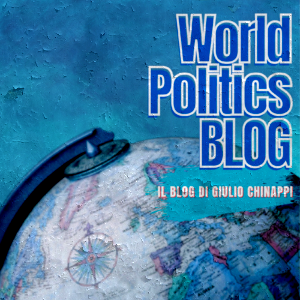di Stefano Vernole
Intervento tenuto dall’autore in occasione del webinar “Peace Crisis in Afghanistan” organizzato dalla Fondazione per il dialogo e la solidarietà delle Nazioni Unite con sede in Iran il 20 settembre 2021.
Saprà il nuovo Governo di Kabul garantire una rappresentanza alle minoranze etniche e religiose del Paese? La Cina riuscirà ad includere l’Afghanistan nel percorso della Belt and Road Initiative? Saper rispondere a queste due domande essenziali permetterà di capire il futuro dell’intera macroregione.
The great Afghan game features all the major powers of Eurasia and their historic challenger (based first in London and then in Washington). In a struggle that appears increasingly complex, however, there is a key nation for the balance of the whole region: Pakistan. The key element of the “Land of the Pure” are its secret services, the infamous ISI, divided internally between a pro-US wing and a pro-Chinese wing but whose final political synthesis corresponds to the national interest of the country. An indispensable counterweight or fuse for the destabilization of Afghanistan, however the decisive cards in this game will once again be given by Islamabad.
The current Taliban have been ideologically and politically forged by two main schools of thought: the Wahabi (historically linked to Saudi Arabia) and the Deobandi (Indian); these are two very rigid visions of Islam, where to be propagated is a literal interpretation of the Koran aimed at returning the Muslim religion to the “purity” of its origins.
The official purpose of Washington’s new strategic plan is “to prevent Afghanistan from re-emerging as a terrorist base to threaten the United States”. The real objective remains that of 20 years ago: to have a strong military and logistical presence in this area at the crossroads between the Middle East, Central, South and Eastern Asia, of primary strategic importance in the geopolitical containment of Russia and China.
A sign to this effect came on April 22, when a car bomb exploded at the “Serena Hotel” in Quetta, in southwestern Pakistan, killing four people and injuring twelve others; Chinese Ambassador Nong Rong was staying in the hotel, but he had left the facility a few minutes before the attack (claimed by the Tehreek-Taliban Pakistan organization). The province of Balochistan is no stranger to attacks by Islamist militants against Chinese officials and economic interests, as it is home to the deep-water port of Gwadar, an important infrastructure on the New Silk Road because it grants Beijing access to the Indian Ocean. The China Pakistan Economic Corridor (CPEC) would allow the Pakistani port to be the second commercial hub in the world after Hong Kong and would become the first maritime branch of the New Silk Road for the import of hydrocarbons from the Middle East.
Since 2015, the Chinese National Petroleum Corporation has been involved in the exploration of oil fields in Afghanistan; in 2016, Beijing and Kabul signed a memorandum of understanding which provides for the provision of substantial funds but with a clear geopolitical significance. The intention of the People’s Republic of China is to include Afghanistan in the infrastructure projects of the Belt and Road Initiative (BRI), aiming to connect the Xinjiang region to Afghanistan via the Wakhan corridor; the latter, in turn, would become the PRC’s gateway to Central Asian markets.
The commitments have become so stringent that the Chinese Armed Forces themselves have felt the duty to intervene in the matter. According to Sun Qi, international relations specialist at the Shanghai Academy of Social Sciences, Afghan soldiers would not be able to ensure the security and stability of the country, despite the fact that the Beijing army has contributed to their training in recent years; for this reason, in compliance with the United Nations Charter, China could send its own troops to Afghanistan.
Afghanistan, also called the “Tomb of Empires”, is a country tremendously difficult to control because it is made up of mountain ranges, isolated valleys and inhospitable deserts; because its population, far from homogeneous from an ethnic point of view (the Pashtuns constitute the great majority in the east and south of the country, while the Tajiks dominate in the north and north-east and the Uzbeks in the north-west; , the only group of the Shiite confession, are instead the majority in some mountainous areas of the center), is more linked to its own territorial horizon restricted to the destinies of a unitary nation. Then there are important cultural elements: the Pashtuns, for example, live according to a code of conduct based on the strict respect of some fundamental rules, and on revenge – even after a long time – against offenders. Those who arrive as guests can count on generous and disinterested support, but those who enter by force can be just as sure of their tenacious hostility.
In addition to some strategic communication routes, Afghanistan attracts the attention of the great powers because it can be crossed by oil and gas pipelines (TAPI is perhaps the most important project currently).
Pakistan has always been accused of having an interest in keeping Afghanistan in a situation of instability and insecurity, as an outlet to the possible terrorist threat within its borders. The Taliban, like most of the inhabitants of the western regions, can be considered by the government of Islamabad as loyal allies, paradoxically, even more useful until there is a solid and authoritative authority in Kabul.
Looking ahead, Afghanistan should lean more on a powerful neighbor like China, which may be more interested than other powers in making the country stable and secure. Its future and that of the whole of Eurasia certainly lie in the dialectic between the various forces competing for control. A geopolitical crossroads full of contradictions, in which Pakistan plays a central and indispensable role.
Military-wise, the Russians trained the Pakistani military to deal with insurgents, with Islamabad now less interested in conflict and more in creating stability and wealth. Russia also has troops stationed in neighboring countries of Afghanistan, all members of the Shanghai Cooperation Organization along with China and whose mandate includes regional security. The intelligence and operational activities will be shared with each other. Russian Foreign Minister Serghei Lavrov recently said that the Russian military airbase on the border between Tajikistan and Afghanistan “will do everything to prevent any aggressive moves against our allies, including the use of the Russian military base on the border between Tajikistan and Afghanistan. . Obligations under the Collective Security Treaty Organization (a Eurasian military security alliance) remain fully in effect. Representatives of the organization’s Secretariat, its delegates visited a section of the Tajik-Afghan border, assessed the situation and will report to the permanent council ”. Lavrov said Russian President Vladimir Putin has had talks with his counterparts in Tajikistan and Uzbekistan and is in contact with other Central Asian leaders.
On 24 August, Russia made it clear that it does not want to see US troops deployed in Central Asia, through the words of Foreign Minister Serghei Lavrov: “The presence of US soldiers in the countries bordering Afghanistan would turn these nations into a target” . The following day, Russian President Vladimir Putin had a telephone conversation with his Chinese counterpart Xi Jinping. The two sides had an in-depth exchange of views on the situation in Afghanistan. “The leaders said they were ready to step up commitments to combat terrorism and drug trafficking from Afghanistan”, the note reads, “and stressed the importance of preventing the spread of Afghan instability to neighboring countries. Putin noted that Russia and China share similar positions and interests on the Afghan question and stressed that Russia is willing to communicate and coordinate closely with China, actively participating in multilateral mechanisms dealing with the Afghan question ”. China respects “the sovereignty, independence and territorial integrity of Afghanistan”, does not interfere in internal affairs, aiming at “a constructive role” for a political solution. President Xi Jinping told his Russian counterpart that China “is willing to strengthen communication and coordination with all parts of the international community and to encourage all Afghan parties to negotiate an open and inclusive political structure”. Russia – Putin concluded in the interview – is willing to coordinate with China for a “gradual transition of the situation in Afghanistan, to fight terrorism, to put an end to drug trafficking and prevent the spread of security risks”.
China has apparently come up with plans to extend the China-Pakistan Economic Corridor (CPEC) into Afghanistan, and Islamabad will provide excellent references to Kabul for engaging in that direction. It appears that Beijing has offered $ 62 billion in infrastructure funding to ensure this happens and to keep the peace. This includes the construction of a highway between Kabul and Peshawar, the same planned route as the trans-Afghan railway. China has pioneered a special economic and development zone in the region on the Pakistani side: the Rashaki SEZ is designed to partly serve local and Afghan markets. If the peace holds, it will be necessary to hire a large number of well-disciplined men, eager to learn new trades and provide for families instead of suffering violence. The Taliban for their part have declared that they will support development projects if they serve Afghan national interests.
Afghanistan would give China and other Central Asian nations a strategic boost as the country is placed as a central hub connecting the Middle East, Central Asia, and Europe. With a total population of 32 million, it is also an attractive market for many, although it will take a carefully managed program to lift it out of poverty – ongoing wars have left Afghanistan 169th out of 180 countries in the ranking. United Nations Human Development Index.
Bordered by Pakistan to the south, Iran to the west, Uzbekistan, Turkmenistan and Tajikistan to the north and northeast, and China to the east, with new planned and existing BRI road and rail links connect it to Central Asia , an Afghan government capable of educating and repositioning its men in industry and willing to undertake trade and investment as an alternative to bullets and bombs, certainly has great potential. The macro-region of Central Asia in the immediate export radius of Afghanistan contains 400 million people.
The Time wrote: “Today, the Pakistani project envisages that in exchange for their renouncing to support terrorism, an international coalition will support the Taliban by allowing them, with investment and recognition, to remain at the helm of the country. Of the coalition, in addition to Russia and China, with which Islamabad has established solid relations, Iran should also be part of, to which the Taliban have promised to respect the rights of the Shiite faithful in Afghanistan”.
At the same time a stable Afghanistan should also be in the interest of Europe of the USA itself, therefore it is essential to release the funds of the Afghan Central Bank which are worth 9 billion dollars out of a total GDP that in 2020 was 20 billion dollars. If the IMF stops lending money to the new government in Kabul, new opportunities will open up, for example for the Asian Infrastructure Bank or the Bank of the BRICS.


















Il CeSE-M sui social